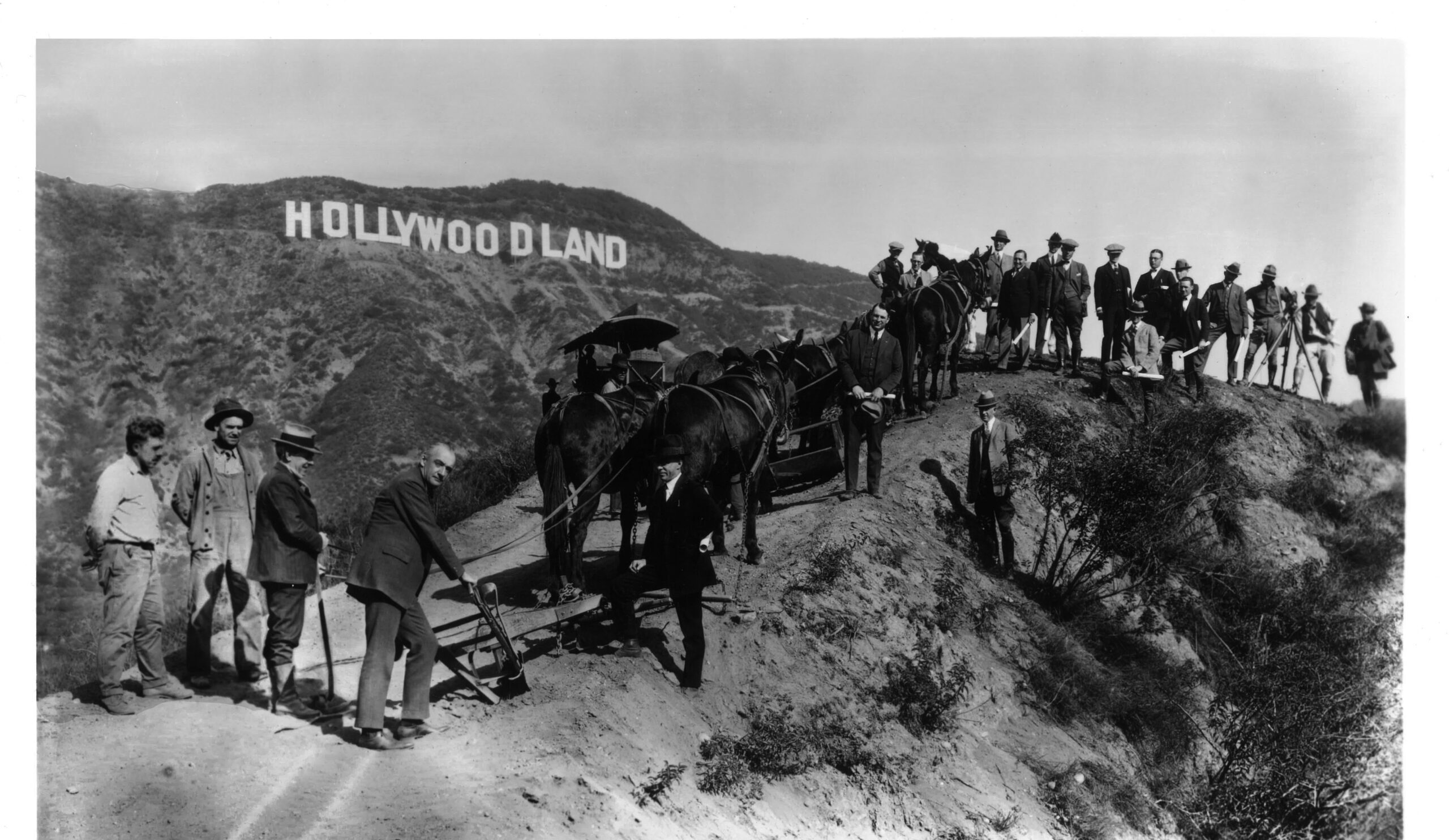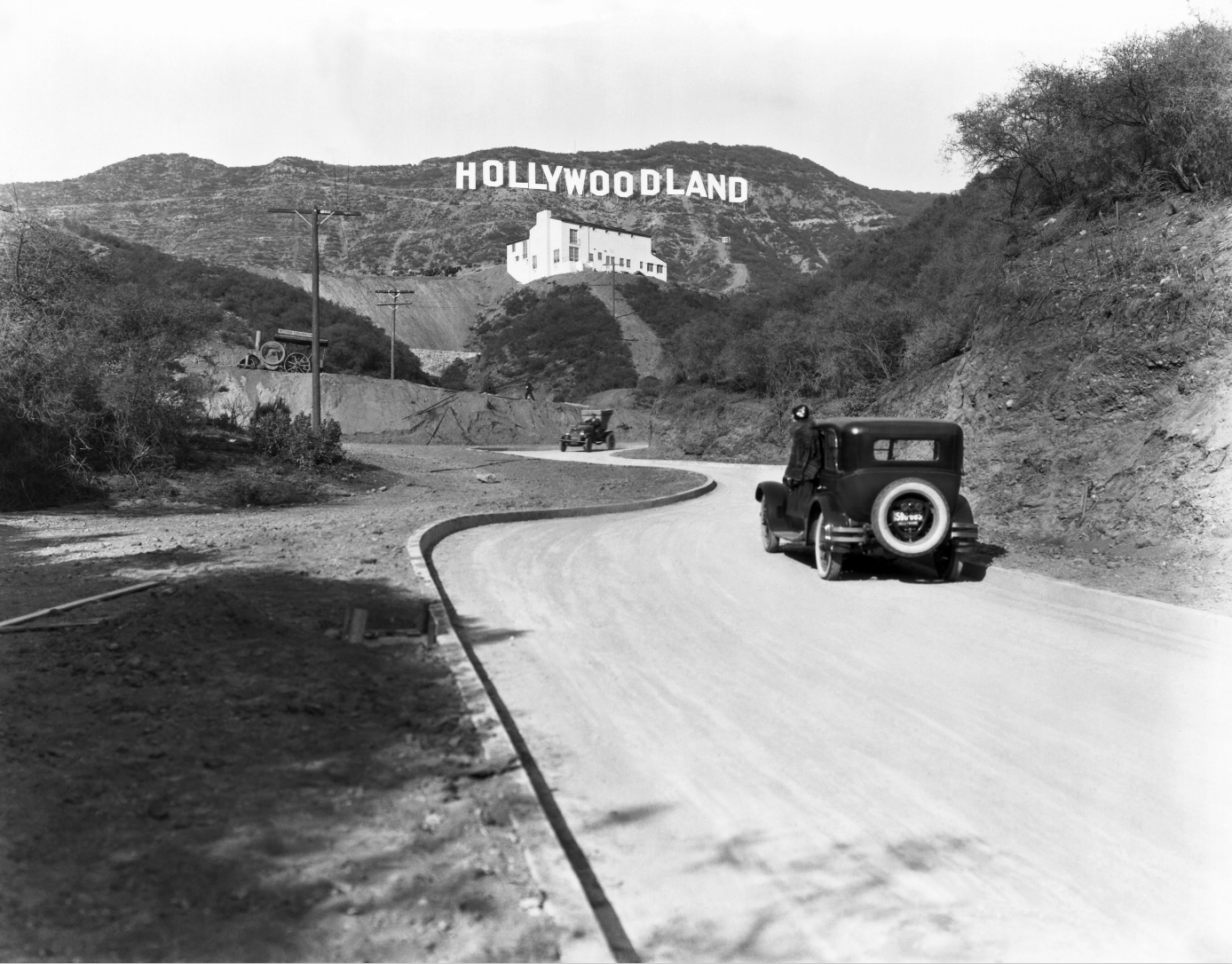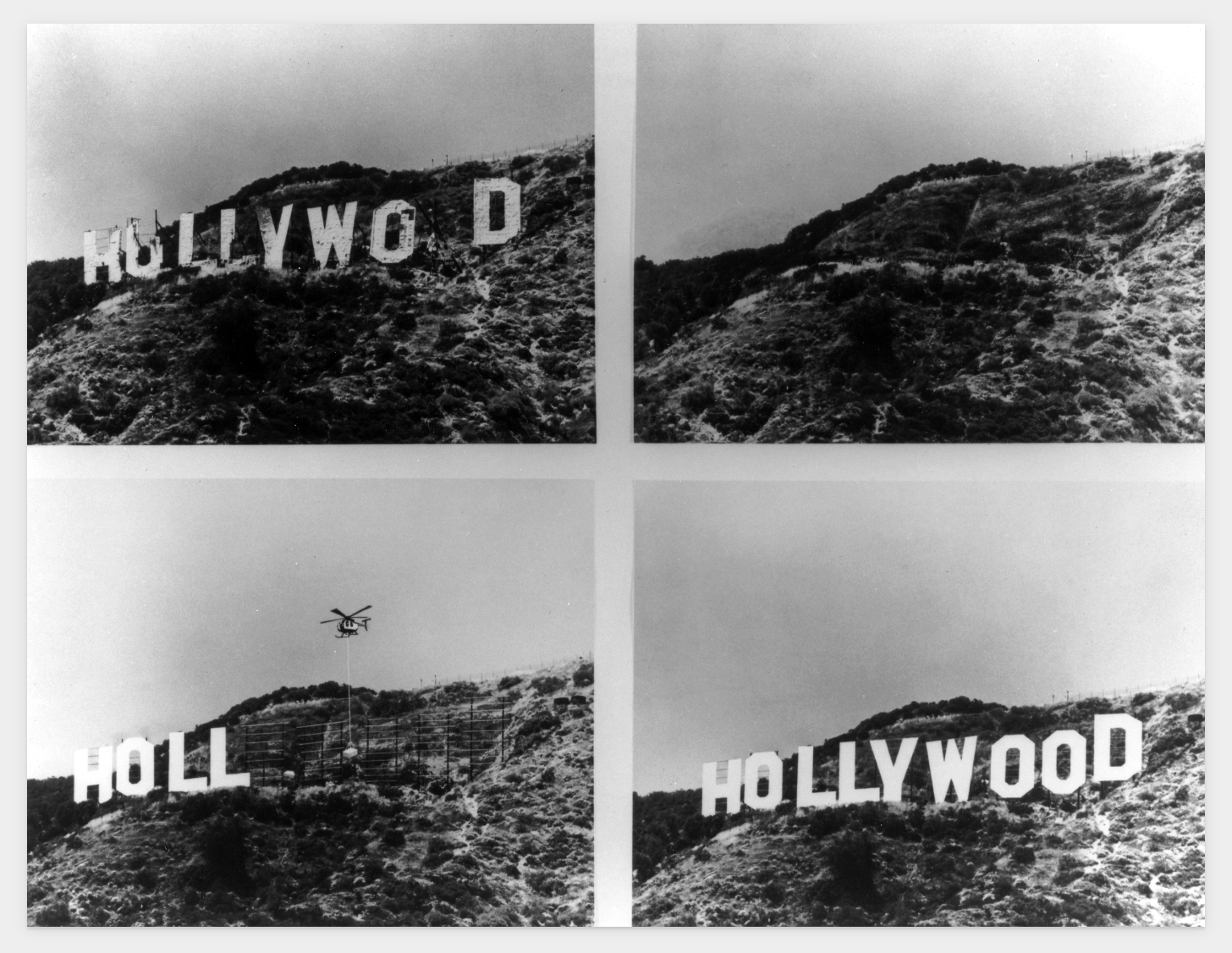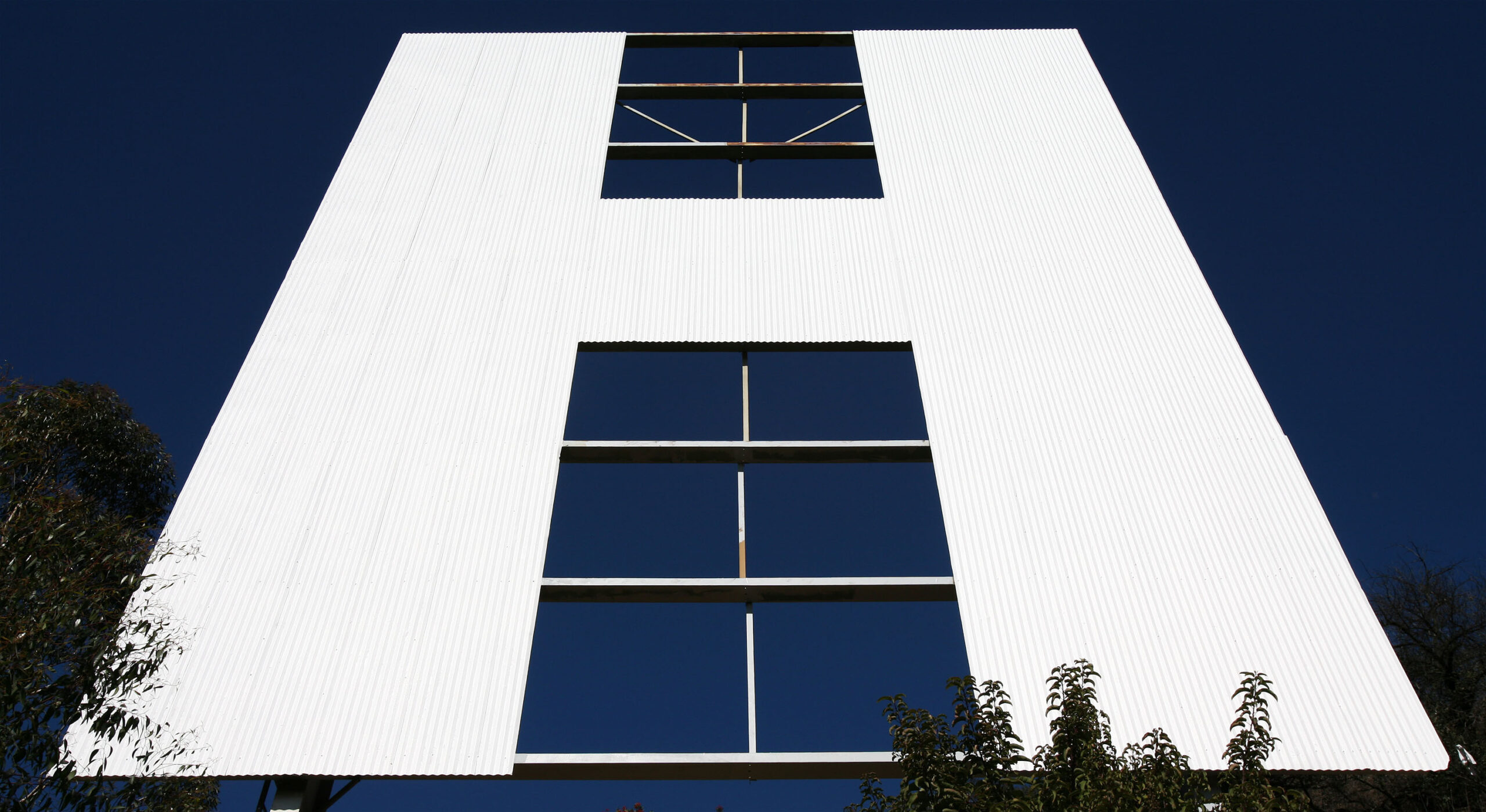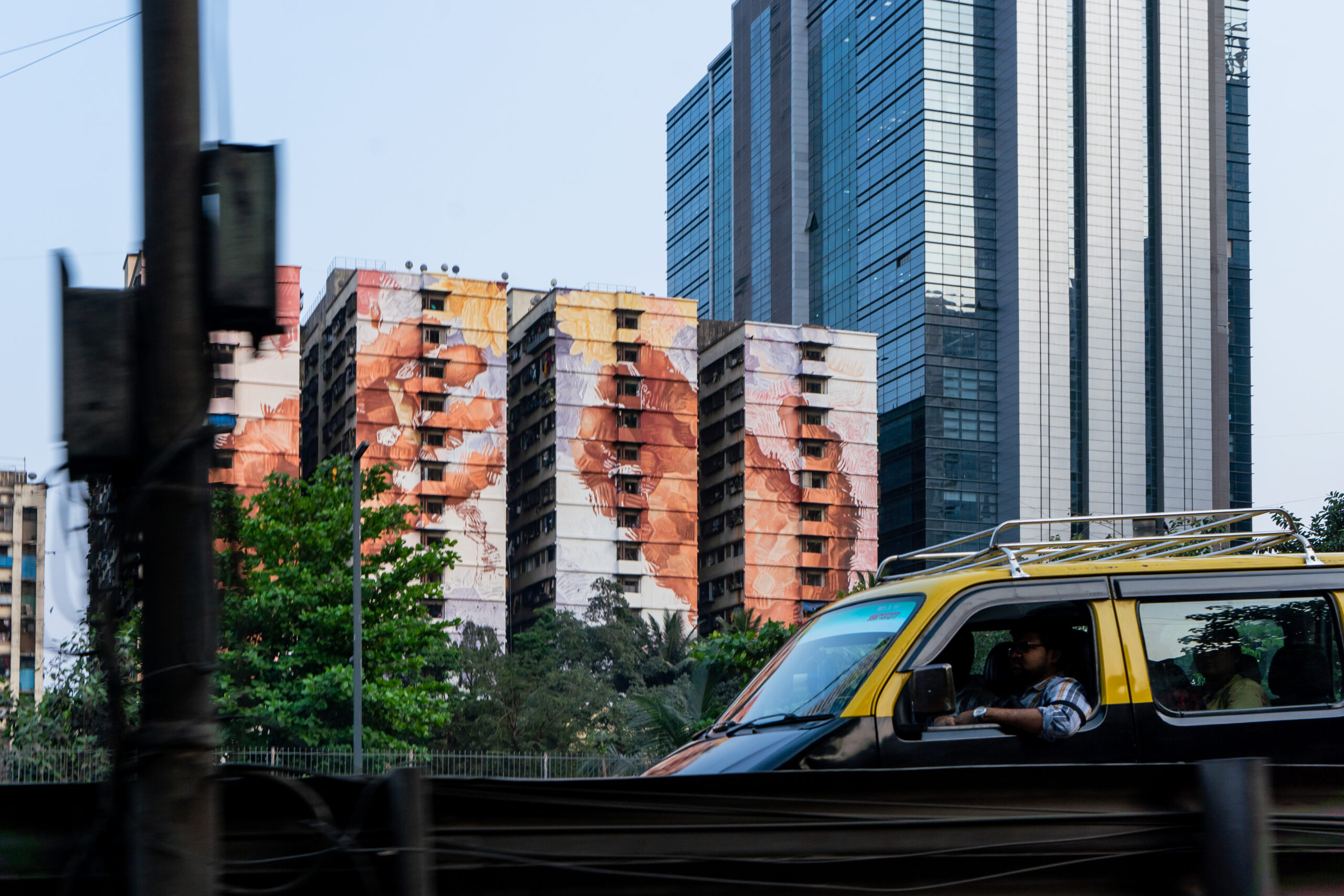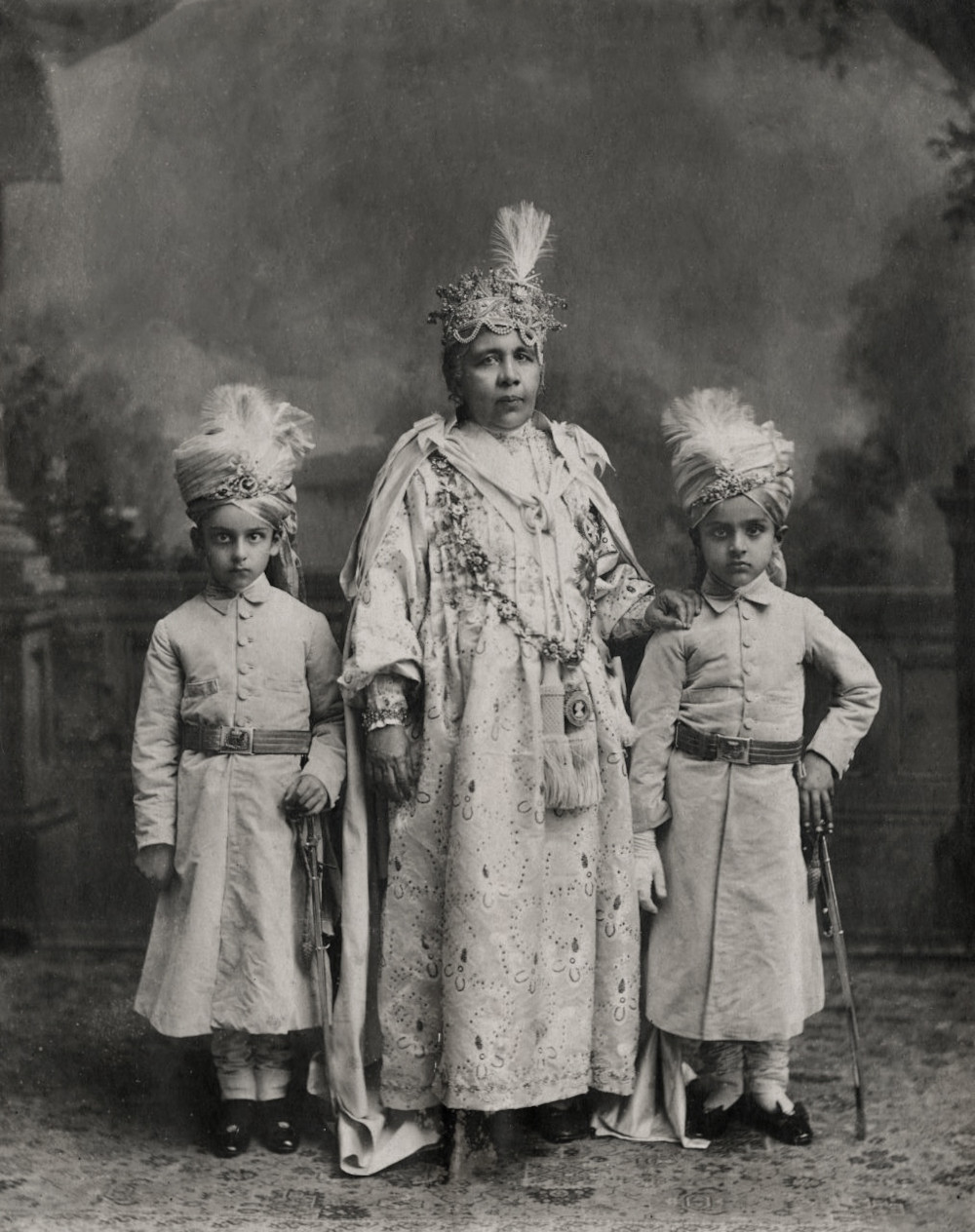Boom! Another bulb had gone. Albert Kothe – the man responsible for keeping the light bulbs on the Hollywood Sign lit – brought his ladder. He placed the ladder behind the letter, tried to stabilize it as much as one can on rough ground, and climbed it up to reach the closest horizontal pipe to the burnt-out bulb. He then stood on the horizontal pipe, walking across it to reach the bulb and make the switch. Imagine, standing on top of the world, on precarious ground, clinging to your life, and changing light bulbs – for 10 straight years, day after day.
This is just one of the stories we heard as we trekked up Mount Lee, where the Sign is perched. Walking along with us, Jeff Zarrinnam – Chair of Hollywood Sign Trust – told us an abridged version of the sign’s 100-year-old history. Yes, the Hollywood Sign is turning a century old this December 8.
The Hollywood Sign was never on my bucket list. For me, it was always ordinary white lettering spelling out the name of the popular American movie industry.
But once I landed in Los Angeles, and saw glimpses of the sign from afar, standing on top of a mountain, I started feeling its influence. After all, it must have some sort of magnetism to keep people pulling towards itself. And by the time I found myself winding up the mountain to visit the sign, I was cautiously excited.
The advertisement
The Hollywood Sign was literally an advertisement. With the movie industry – which was not called Hollywood until then – flourishing in Los Angeles, and seeing droves of people settling under the mountains, a group of ambitious real estate mavens devised an upscale community called ‘Hollywoodland’.
The development was funded by a syndicate composed of Eli Clark, General Moses Sherman, Tracy Shoults, Sydney Woodruff and Los Angeles Times publisher Harry Chandler. A $21,000 sign, spelling ‘HOLLYWOODLAND’, was erected in 1923 to advertise this subdivision, to sell this dream, which was located at the end of Beachwood Canyon just below Mount Lee.
This development promised beautiful views and stunning architecture. Thanks to the sign, which was lit up with 3,700 bulbs, many signed up to get their spot of luxury up the hill. Today, as we wound up the path, we could see modern homes with expensive cars gracing the hills.
The sign, like any monument, started courting its own myths and legends. A budding starlet committed suicide under the sign in 1932. Pranksters and protestors have altered the sign to display their own messages. From ‘HOLLYWEED’ to ‘OLLYWOOD’, the sign has seen many instances of vandalism – each a story in itself. The sign, eventually, not just became an advertisement for the housing development, but for many other groups – some unsavoury – in the future.
The turnaround
The Sign was never supposed to last as much as it has. It was always an advertisement that had to serve a purpose. With that in mind, the sign was crafted with rudimentary materials. Sixty-foot telephone poles were carried up a crude road, along with 1,320 pieces of sheet metal. Workmen dug 18 eight-foot holes, lowered the roughly 1,440-pound poles into
those holes, and anchored and installed 96 vertical supports to the pipes. More than 1,320
pieces of sheet metal were nailed to the Sign’s frame to form the letters.
Once it served its purpose, the M.H. Sherman Company – that owned the unsold land and the Sign – decided to stop its maintenance in 1933. The light bulbs ceased to light up. Soon after, its condition began to dilapidate. Once magnificent, it became an eyesore towering over Los Angeles. One by one, the letters had started blowing away. In early 1939, however, the company bowed to public pressure and entered into a contract with Harman & Company to repair the Sign. This was just the first of many repairs.
In 1944, the Sign and the 425 acres of undeveloped land surrounding it, was donated to the City of Los Angeles, for a token price of $1. The Sign’s fortune, however, did not change. The ‘H’ fell down and remained on the ground for six years. There was chatter on completely removing the Sign, but the residents of Hollywood protested against it. Therefore, another round of repairs in 1949 led to resurrection of the ‘H’ and removal of ‘LAND’ – giving it its current shape of ‘HOLLYWOOD’.
From 1949 to 1960s, the Sign fell into utter disrepair. After all, it was made with crude materials in 1923! Harsh weather elements had warped and rusted the sheet metal face, while wood-rot and termites eroded the frame. In 1973, 50 years after its birth, the Sign was designated as Historic Cultural Monument #111 by the Cultural Heritage Board of the City of Los Angeles. Committees were made, fundraising events were held, and donations came in, leading to another facelift of the Sign. But it was just that – a repair which did not last long.
Perhaps, it was a storm that saved the Sign. On February 10, 1978, a powerful windstorm battered Los Angeles, causing significant damage to the Sign. The third ‘O’ sustained the greatest damage with broken beams, twisted metal and snapped telephone poles. The ‘Y’ partially collapsed. And all the other letters had missing pieces of sheet metal.
This time, however, it was the movie industry – that had gotten to be known as Hollywood by now – that came as a saviour. After an inspection, it was decided that the Sign couldn’t be saved in its current state. It needed to be completely replaced.
On May 25, 1978, the Hollywood Chamber of Commerce launched a “Save the Sign” campaign, with a goal of raising $250,000 to build a new, sturdier Hollywood Sign, with the same design and size as the original. It was decided that each letter needed $27,700 to be raised. Rock star Alice Cooper was the first to pledge $27,700 to rebuild an “O” – although there is much controversy on which ‘O’ he donated for, says Mr. Zarrinnam. Following Mr. Cooper, Warner Bros. Records announced they would also contribute $27,700, for the replacement of the second “O.” On June 29, the iconic Hugh Hefner hosted a $150-per person, star-studded party at the Playboy mansion. The highlight of the event was Andy Williams’ announcement that he would pitch in $27,700 to replace the “W.” As a token of appreciation, Chamber of Commerce President Jack Foreman announced that $27,700 of the $45,000 raised at the party would be used to replace the “Y” and the new letter would be dedicated to Mr. Hefner.
Soon, others came ahead to donate. And the next thing we know, the old sign was knocked down to give birth to a new, improved version. This time, steel girder beams were skillfully lowered into the holes by a Hughes 500D helicopter, then the holes were filled with 194 tons of concrete. Next, the helicopter lowered the first “row” of 15-foot-long steel beams, which were bolted to the tops of the foundation beams. Each beam was then fitted with two additional 15-
foot beams. The result was a lineup of 45-foot high steel beams ready to serve as the Sign’s
structural core. Next, the crew attached the horizontal supports and, later, the corrugated baked enamel sheet metal panels that form the Sign’s letters. When finished, the Hollywood Sign stood as the largest sign in the world.
In 1992, the California Attorney General granted distinct legal rights and responsibilities of the Hollywood Sign to three official agencies: the City of Los Angeles (which owns the land the Sign stands on), the Hollywood Chamber of Commerce (which owns the licensing rights for the Sign’s image), and the Hollywood Sign Trust (formed to maintain, repair and provide capital improvements to the Sign).
Thanks to the non-profit Hollywood Sign Trust, the Sign today is saved from mankind by having a state-of-the-art surveillance system around it. Nobody can touch the sign. And Sherwin-Williams, the American paint company, has created a special eco-friendly Hollywood latex white paint that it uses to paint the Sign when required. Yes, you can buy the Hollywood white paint from Sherwin-Williams for your house if you want!
The Sign, today
So, we continued climbing up, until we were overhead the Sign, and then we semi-rappelled down to reach the Sign. It was a hot day, and the rappelling was a little scary for a non-adventurer like me, but I survived. And I am glad I did! Because the view – oh, the sweeping views – were simply gorgeous from the Sign. It’s a sight you will never forget. The whole valley was below us. You could see the real estate development down there – where the story all began. You could see the viewing platform where most people come to pay their respects to the Sign. You could see the beautiful, big, blue Lake Hollywood.
A note of caution – public is not allowed to trek up or rappel down to the Sign – to save it from vandalism and miscreants. Indeed, when two sprightly youngsters tried retracing our footsteps, Mr. Zarrinnam unceremoniously told them to scram away. As they did, the Chairman turned to us and chuckled with a wink, “We are promoting bad behaviour.”
Standing there, Mr. Zarrinnam regaled us with the stories of the Hollywood Sign. He showed us the old posts of ‘LAND’. He showed us the names of the workers etched in cement – who erected the new Sign – under each letter they had worked on. His love, pride and protectiveness for the Sign shown through as he answered our umpteen questions. The most pertinent question in my mind, though, was whether the movie industry was named after the Sign, or vice-versa?
Thinking through, he said, “It’s an abstract.” And I can understand why. Historically, the Sign came first. The industry was named so later. But today, neither can exist without each other. They are as inextricably linked as a parent and child. But which is which? The answer is open to interpretation.
Standing in front of the Sign, touching it, I suddenly felt the history, the dreams and the meaning behind it. The Hollywood Sign is perhaps the simplest of all monuments. It has no carvings, no gems, no hidden scriptures, not even inspiring engineering, nothing. It’s a simple sign. Even then, it signifies so much to the people who live under it. It inspires people to realise their dreams, to tell them that anything is possible, if only you work hard and smart. Sometimes, that’s all you need. And just like that, my heart swelled for something I couldn’t care about 24 hour earlier. I fervently wished in my heart that the Hollywood Sign continues to inspire another generation, that it continues to sell dreams, that it continues to stand for another 100 years.
Words by Soumya Jain Agarwal.
